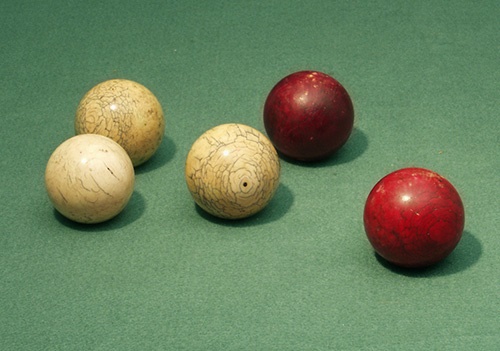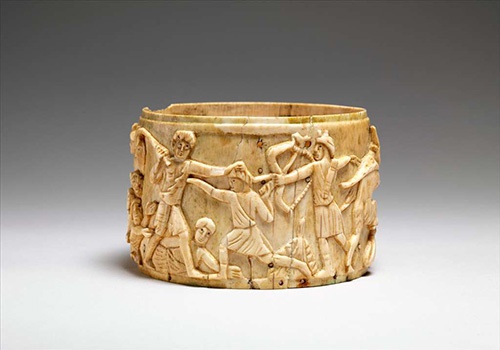Can antique ivory be sold?
Understanding the recently introduced ivory ban
12/01/2023
What is ivory?
A hard, off-white or yellowish natural material comprised mostly of Dentine, ivory plays a key role in the physical structures of the teeth and tusks of most mammals. Traditionally it is obtained from the tusks of elephants which has had a detrimental impact on both the African and Indian species, however, the likes of walruses, hippos, and narwhals are also known targets for poachers across the world.
The use of ivory as a material began thousands of years ago, in ancient civilisations such as such as Mesopotamia, Greece, Rome, Egypt, the Indus Valley, and across Asia. Originally it was fashioned into practical items such as pins, combs, clasps and jewellery, before later developing a more ritualistic purpose in the form of votive figures and panels.

Credit: National Geographic Education, 2006 Greg Willis
However, as time moved forward, the aesthetic capability of ivory was realized, and civilisations developed more elaborate uses for the in their decorative art and furniture designs. It became apparent to craftsmen that they were able to obtain much finer detail with the rudimentary stone and bronze tools of the time, by carving ivory rather than wood. The Ancient Egyptians in particular, appear to have utilised the aesthetic value of ivory, using it to craft decorative inlays for their stools and other pieces of furniture.
Uses for antique ivory
Due to its ability to be easily worked to a smooth finish and readily accept colouration by vegetable or synthetic dyes, Ivory is often seen today in vintage turned ivory billiard balls. From the 18th century onwards, it replaced mica, wood, and velum as grounds for miniature portraits and pictures because it was thought that it gave better luminesce to skin tones and more vibrance to the colours applied when painting with watercolour.

Ivory billiard balls. Credit: National Museum of American History, Smithsonian Institution
Gambling and gaming is another area where use of ivory was prevalent. The ability to indulge in such hobbies was only enjoyed by the wealthy, meaning that the likes of counters, chess pieces and even dice were often highly decorative and made of ivory to symbolize status. The use of ivory and bone for gaming was such that you can often see small crown symbols inscribed faintly on various pieces, particularly dice, to indicate that a tax was applied to them.
The Ivory Act 2018
In 2018 the UK Parliament introduced a prohibition on dealing in items containing elephant ivory, which effectively recognised that ivory cannot be sustainably or practically sourced without the inhumane slaughtering of animals. According to government research in 2022, the number of elephants roaming free in the wild has been reduced by almost a third, with it being estimated that around 20,000 are still slaughtered annually because of the global demand for ivory.
Poaching has reduced elephant populations to an all-time low, with both Indian and African elephants now being classed as endangered species. In response to this worrying fact, since the 6th of June 2022 an almost total ban on ivory sales has been enforced across the UK, unless an item has an exemption due to the proportion of ivory to the whole item, or its outstanding cultural, historical or artistic importance.

Since ancient times, ivory has been used in decorative art. Credit: Metropolitan Museum of Art
Outlined below are the exemption rules from the ban, however a license must still be obtained.
- Portrait miniatures, which pre-date 1918. To qualify for exemption, miniatures must not measure more than 320cm squared.
- Items with a low ivory content made before 1947. The ivory must be an integral part of the item and contribute to no more than 10% of the item’s total volume.
- Pre-1975 musical instruments where the volume of ivory contributes to no more than 20%. This does not include items that can be used as instruments but were not made solely for that purpose.
- Items being sold and purchased by qualifying museums. The museum buying or hiring the item must be a member of the International Council of Museums, or Accredited by or on behalf of Arts Council England, Scottish ministers, Northern Ireland Museums Council or the Welsh Government.
Failure to comply with the law under the Ivory Act 2018 will result in a fine of £250,000 or 5-years’ imprisonment.
The team of experts at Dawsons are always pleased to provide advice, assistance and appraisals in person at our saleroom in Berkshire, our valuation office in London, or from the comfort of your own home via a visit or our online valuation service.
Please do get in touch, we would love to hear from you.
0207 431 9445 info@DawsonsAuctions.co.uk